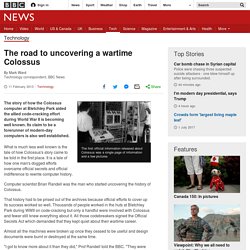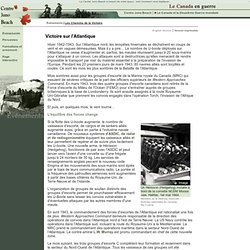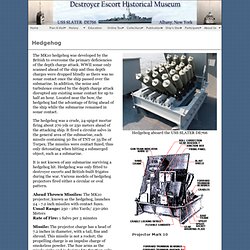

World War II in Color: American Bombers and Their Crews, 1942. Within weeks of the December 1941 attack on Pearl Harbor and America’s official entry into the Second World War, Allied forces in Europe activated the now-legendary VIII Bomber Command (often referred to as the Eighth Air Force ) to serve as the principal American force to attack Germany from the air. Often in tandem with planes from the Royal Air Force, American B-24s and B-17s — or Flying Fortresses — from the “The Mighty 8th” would spend the next several years bombing strategic towns and cities in Nazi-held Europe. As a jumping off point for countless bombing runs, including many in broad daylight, the United States Army Air Forces (the predecessor of the U.S.
Air Force) set up bases in England during the war. In 1942, LIFE’s Margaret Bourke-White spent time with the Bomber Command — an assignment that LIFE shared with its readers in an October 1942 feature notable, although hardly surprising, all these years later for its triumphant tone: Les bombes atomiques (Hiroshima, 6 août 1945 - Nagasaki, 9 août 1945) Entre [...] = indications hors textes Lettre d'Einstein au président Roosevelt "2 août 1939.

Monsieur, Un travail récent d'E.Fermi et L.Szilard, dont on m'a communiqué le manuscrit, me conduit à penser que l'uranium va pouvoir être converti en une nouvelle et importante source d'énergie dans un futur proche. Certains aspects de cette situation nouvelle demandent une grande vigilance et, si nécessaire, une action rapide du gouvernement. Au cours des quatre derniers mois, grâce aux travaux de Joliot en France et ceux de Fermi et Szilard en Amérique, il est devenu possible d'envisager une réaction nucléaire en chaîne dans une grande quantité d'uranium, laquelle permettrait de générer beaucoup d'énergie et de très nombreux nouveaux éléments de type radium.
World War II Technology that Changed Warfare - Radar and Bombsights. Bomber Command 1944. Événements militaires. New Orleans: Learn: For Students: WWII History. Advancements in Technology in World War II. The road to uncovering a wartime Colossus. The story of how the Colossus computer at Bletchley Park aided the allied code-cracking effort during World War II is becoming well known.

Its claim to be a forerunner of modern-day computers is also well established. What is much less well known is the tale of how Colossus's story came to be told in the first place. It is a tale of how one man's dogged efforts overcame official secrets and official indifference to rewrite computer history. Computer scientist Brian Randell was the man who started uncovering the history of Colossus. That history had to be prised out of the archives because official efforts to cover up its success worked so well. Almost all the machines were broken up once they ceased to be useful and design documents were burnt or destroyed at the same time.
"I got to know more about it than they did," Prof Randell told the BBC. Sensitive operation While putting those papers together, he was asked why he had written so little about Alan Turing. He was turned down flat. Science and Technology of WWII. Science and Technology of WWII. SONAR vs.

Centre Juno Beach - Victoire sur l'Atlantique. Hiver 1942-1943.

Sur l'Atlantique nord, les tempêtes hivernales se déchaînent en coups de vent et en vagues démesurées. Mais il y a pire… Le nombre de U-boote déployés sur l'Atlantique ne cesse d'augmenter et, parfois, les meutes réunissent jusqu'à 20 sous-marins pour s'attaquer à un convoi. Les attaques sont si destructrices qu'elles menacent de rendre impossible le transport par mer du matériel essentiel à la préparation de l'invasion de l'Europe. Pendant les 20 premiers jours de mars 1943, 85 navires alliés sont torpillés et coulés. Ce sont les mois les plus sombres de la Bataille de l'Atlantique. Mois sombres aussi pour les groupes d'escorte de la Marine royale du Canada (MRC) qui essuient de sévères critiques de la part des officiers supérieurs de Western Approaches Command.
Et puis, en quelques mois, le vent tourne… Hedgehog. The MK10 hedgehog was developed by the British to overcome the primary deficiencies of the depth charge attack.

WWII sonar only scanned ahead of the ship and thus depth charges were dropped blindly as there was no sonar contact once the ship passed over the submarine. In addition, the noise and turbulence created by the depth charge attack disrupted any existing sonar contact for up to half an hour. Located near the bow, the hedgehog had the advantage of firing ahead of the ship while the submarine remained in sonar contact. The hedgehog was a crude, 24-spigot mortar firing about 270 yds or 250 meters ahead of the attacking ship. It fired a circular salvo in the general area of the submarine, each missile containing 30 lbs of TNT or 35 lbs of Torpex.
It is not known of any submarine surviving a hedgehog hit. Ahead Thrown Missiles: The MK10 projector, known as the hedgehog, launches 24 - 7.2 inch missiles with contact fuzes.